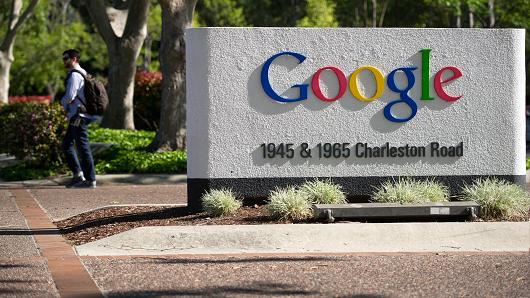
09 Jan Silicon Valley ‘needs guidance’ to boost diversity: Entrepreneur
Google signage displayed outside of the company’s headquarters in Mountain View, California.
Silicon Valley has a diversity problem, and Hank Williams has put himself on a crusade to address it.
The technology sector’s glaring lack of black, Hispanic and female talent has been widely chronicled, but one question remains unanswered. How do companies like Google, Apple and Facebook solve the problem?
Williams, a technology entrepreneur, created Platform, a non-profit organization waging a multi-pronged campaign to boost the number of candidates of color in the sector’s talent pool. He’s publicly called on tech behemoths to “level the playing field.”
While most tech companies have been receptive to the idea of more diverse hiring, “they need guidance on how to proceed,” Williams told CNBC in a recent interview.
Read More Hey CEOs: Hire women if you want to boost revenue
“They know there’s a problem but who to work with—and on what—is not obvious,” he said. Williams acknowledged that he “hasn’t gotten any calls or emails from [Mark] Zuckerberg or Larry Paige, but for us it was important to take the first step.”
‘Platform’ for success in technology?
Platform, the organization Williams created, believes “tech companies have a big role to play in hiring and investing in this process in the future.”
Earlier this year, Silicon Valley’s titans stoked a debate in the wake of the release of employment data that showed their workforce had a stark gender and diversity gap.
Figures from Google, Yahoo, and LinkedIn showed their workers were more than 60 percent male; meanwhile, black and Hispanic workers often account for less than 10 percent of their worker population.
Read More White and male, Google releases diversity data
The relatively small numbers of minorities that are employed in high-tech are also paid less: a recent study from the American Institute for Economic Research showed that Asians, Hispanics and blacks all earn less than their Caucasian counterparts.
While virtually all of the companies agree there is a problem, there’s a lack of consensus on who’s to blame, and how to remedy the situation.
Analysts point to the formative educational years spent in middle and high school, where only a small percentage of students of color are exposed to the rigors of a math and science curriculum that prepares them for careers in technology. Data has shown that nominal percentages of women, blacks and Hispanic high-school students earn advanced placement credit in computer science.
Williams, however, insists the problem isn’t just with the high school and college pipeline. “Is there a pipeline problem? Yes, but that doesn’t explain less than two percent of your employees being people of color,” he said.
“Most of the Silicon Valley types are not engineers, they are also in sales, marketing and public relations,” Williams added, where the ranks of employees of color are also thin.
In October, Platform partnered with Morehouse College and the Level Playing Field Institute to create an academy to immerse students in math and science. The initiative, dubbed the 10,000 Innovators Fund, is aimed to “invest in young people to increase the pipeline with technical engineering skills,” and boost the number of minorities in science and engineering programs.
“I think that in 2015 there will be significant movement around this, and pople will be focused on this issue,” Williams said.
“We are very active in negotiations and discussions with entities that can move the ball. But I do think in 2015 there is going to be some exciting movement,” he added. “The momentum is gaining.”
SOURCE
by Javier E. David | @TeflonGeek


michaelhallM4
Posted at 18:59h, 09 JanuarySilicon Valley ‘needs guidance’ to boost diversity: Entrepreneur. #digigrass #ii395 http://t.co/9H9RZeXj7W
Joy L Anderson
Posted at 00:24h, 10 JanuaryJoy L Anderson liked this on Facebook.
Joe Kelly III
Posted at 12:37h, 10 JanuaryJoe Kelly III liked this on Facebook.